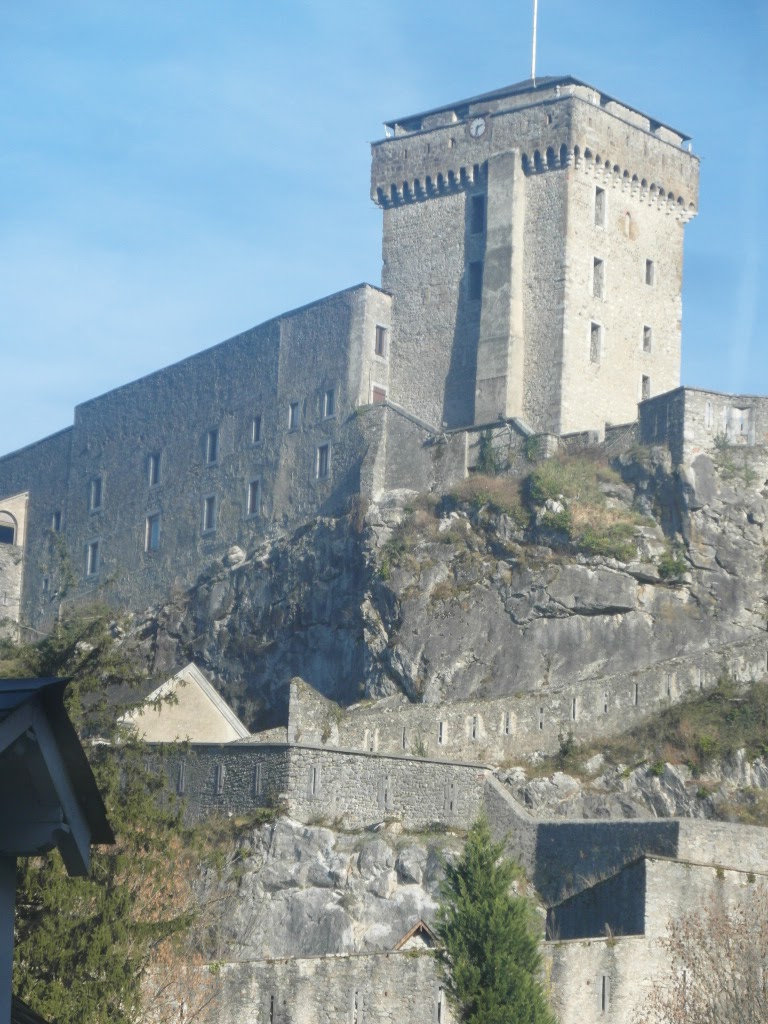Château fort de Lourdes: A Historic Fortress and Museum in France
Visitor Information
Google Rating: 4.5
Popularity: Medium
Google Maps: View on Google Maps
Official Website: www.chateaufort-lourdes.fr
Country: France
Civilization: Unclassified
Remains: Military
History
The Château fort de Lourdes is located in the town of Lourdes, France. Its origins trace back to Roman times, when the site was first established on a rocky promontory that commands the entrance to the seven valleys of the Lavedan in the Pyrenees. The location was chosen for its strategic advantage, providing control over the surrounding region.
In the year 778, the fortress plays a role in a notable historical episode when Charlemagne besieged it during a campaign against Saracen forces. According to legend, the Saracen leader Mirat, confronted by Charlemagne, converted to Christianity and was baptized as Lorus, a figure whose name later became attached to the site and the town. During the 11th and 12th centuries, the castle served as the stronghold and residence of the Counts of Bigorre, earning a reputation for being almost impossible to capture.
Control of the castle shifted in the 12th century when it passed to the Counts of Champagne, who also held the title of kings of Navarre. Later, under the reign of Philip IV of France, known as Philippe le Bel, the fortress became part of the French royal domain. The Treaty of Brétigny in 1360 resulted in the castle being ceded to English control. It returned to French hands following two sieges in the early 15th century, reaffirming its strategic and military importance.
Throughout the 13th and 14th centuries, the fortress underwent significant reinforcement, including the construction of its prominent keep or donjon. Additional fortifications were made from the 17th century through the 19th century, reflecting evolving defensive needs. Beginning in 1590, during the reign of Henry IV, the château served as a royal residence. Subsequently, it functioned as a prison, first under royal and then state administration, a role it sustained until the early 20th century.
In 1921, thanks to the efforts of Louis and Margalide Le Bondidier, the castle was transformed into the Musée Pyrénéen, dedicated to the arts and popular traditions of the Pyrenees, a function it retains today. Official recognition of its historical value came in 1933 when it was listed by the French Ministry of Culture as a monument historique. It was further classified as a historic monument in 1995 and, since 2002, has been designated the French Museum by the Ministry of Culture.
Remains
Perched atop a commanding rocky outcrop in the town of Lourdes, the château’s layout reflects its long history of construction and adaptation. The fortress is surrounded by a series of defensive walls, completed by the 14th century, which once enclosed multiple towers. Though some of these towers have disappeared over time, the high residential tower, or donjon, remains a dominant feature. Originally built around 1314 and heightened after a siege in 1406, this tower reaches 26 meters in height. It was commissioned by Gaston Fébus, Count of Foix-Béarn, and served as the stronghold’s centerpiece.
Archaeological discoveries during military engineering work in the 19th century revealed remnants from the Roman era beneath the medieval structures. These include fragments of sculptures, votive altars, and portions of ancient walls. While the original Roman walls were largely destroyed during this period of construction, the artifacts excavated are preserved and displayed on site, offering tangible links to the fortress’s earliest phase.
The medieval defenses include a gate equipped with a portcullis—a heavy, vertically sliding grille used to block entry—and murder holes, openings through which defenders could target attackers from above. Among the specialized defensive constructions is the Chausenque bastion, a 15th-century artillery tower featuring two levels with narrow firing slits known as loopholes. This bastion provided a strategic position for the use of early firearms and artillery.
A notable feature within the fortress is the former chapel of the Counts of Bigorre. This chapel integrates materials from the parish church of Saint-Pierre de Lourdes, which was demolished in 1904. It retains early 18th-century Baroque furnishings that originally belonged to that church, preserving elements of local religious heritage within the military context of the castle.
Inside the fortress, a spiral staircase of 104 steps winds up to the top of a dungeon, which contains a secret chamber. Water management was addressed through a large rainwater cistern capable of holding 130 cubic meters, supplying the occupants in times of siege. At the entrance, visitors encounter a reconstructed drawbridge with horned features, built in 1842, replacing earlier medieval defense mechanisms.
The site further contains latrines, a courtyard of honor, and gardens, supporting various functions of the castle across centuries. A Pyrenean cemetery at the fortress preserves funerary steles and stone coffins from different historical periods, underlining the castle’s long human presence. Military modifications from the 17th to 19th centuries include the addition of barracks and a powder magazine, reflecting modernization efforts in line with changing warfare technology.
Offering commanding views over the surrounding valleys, the château continues to stand as a layered witness to its diverse past, blending Roman foundations with medieval fortifications and modern museum functions. It is illuminated at night, highlighting the enduring prominence of this historic landmark.










